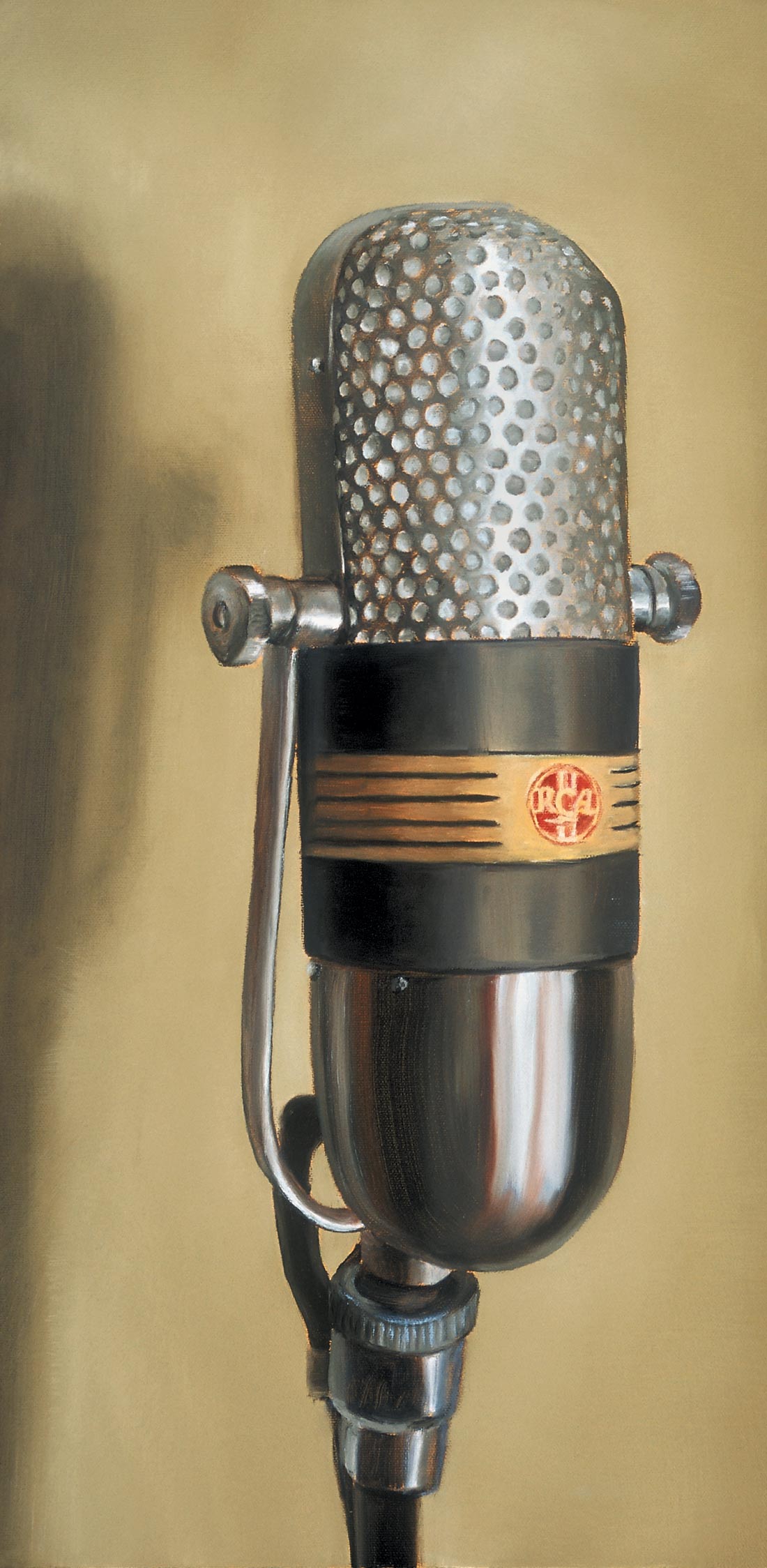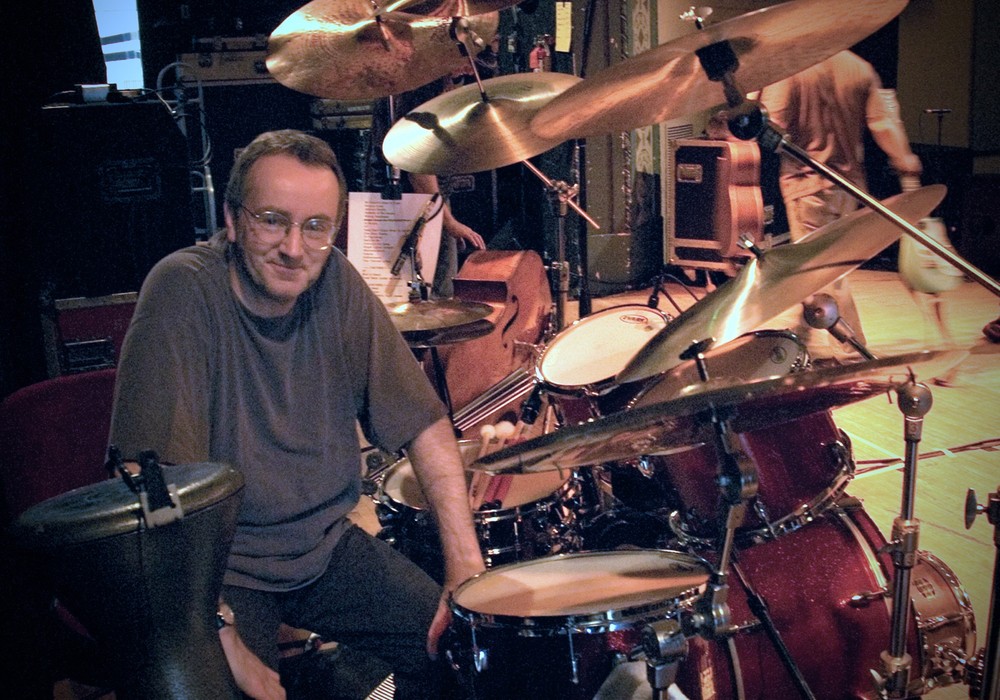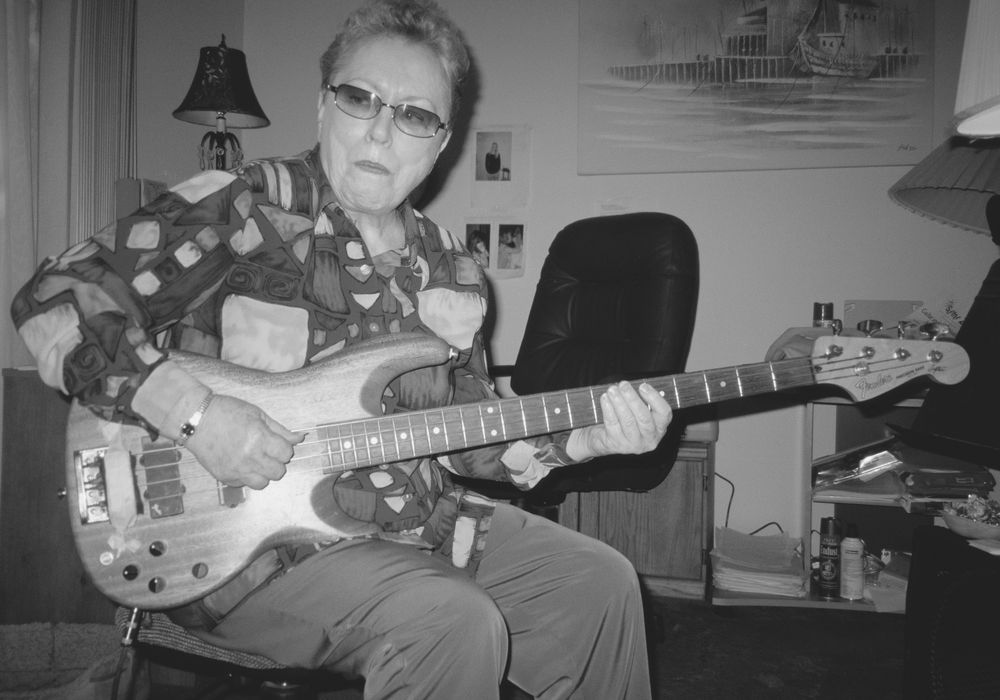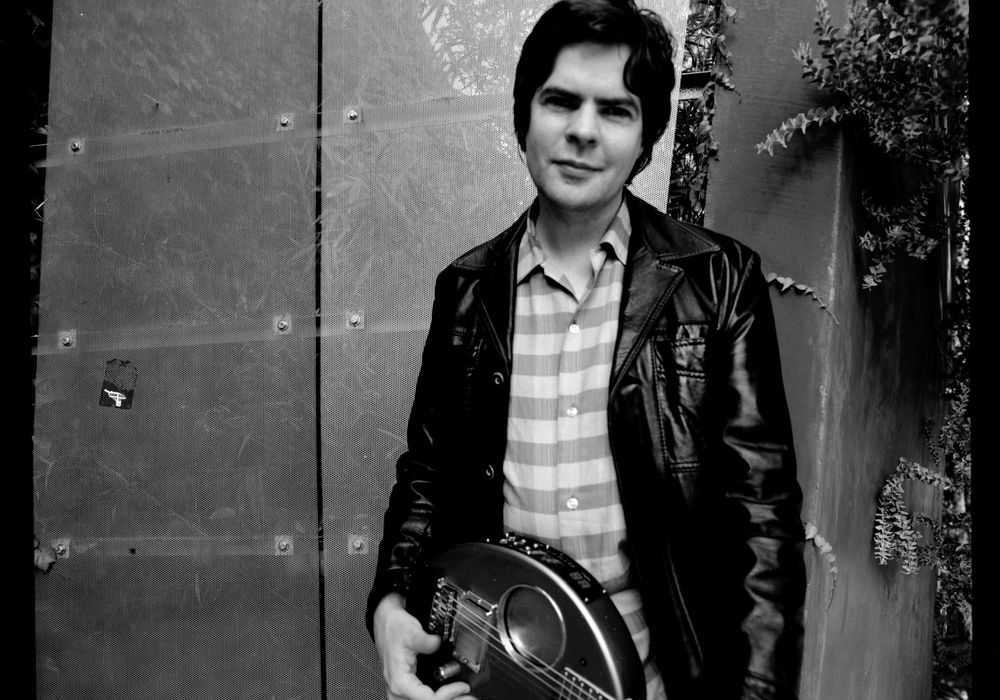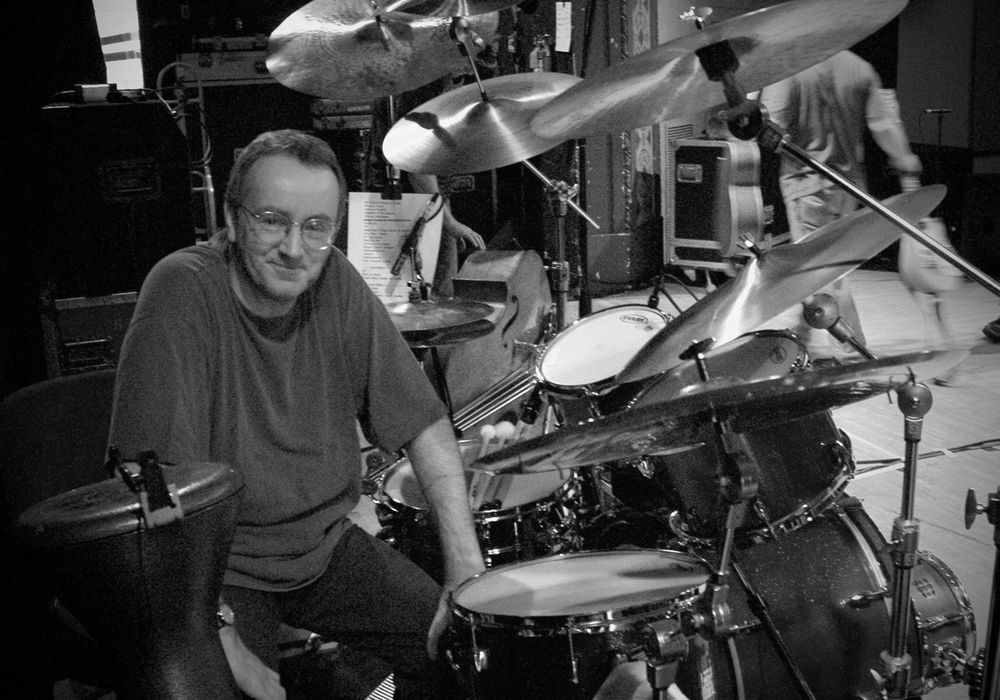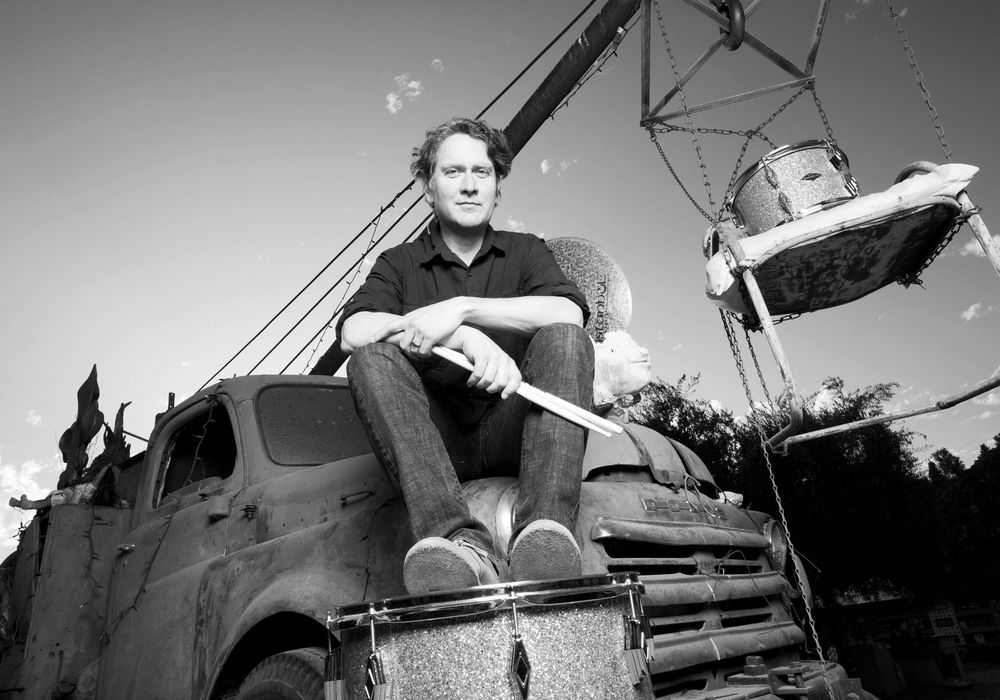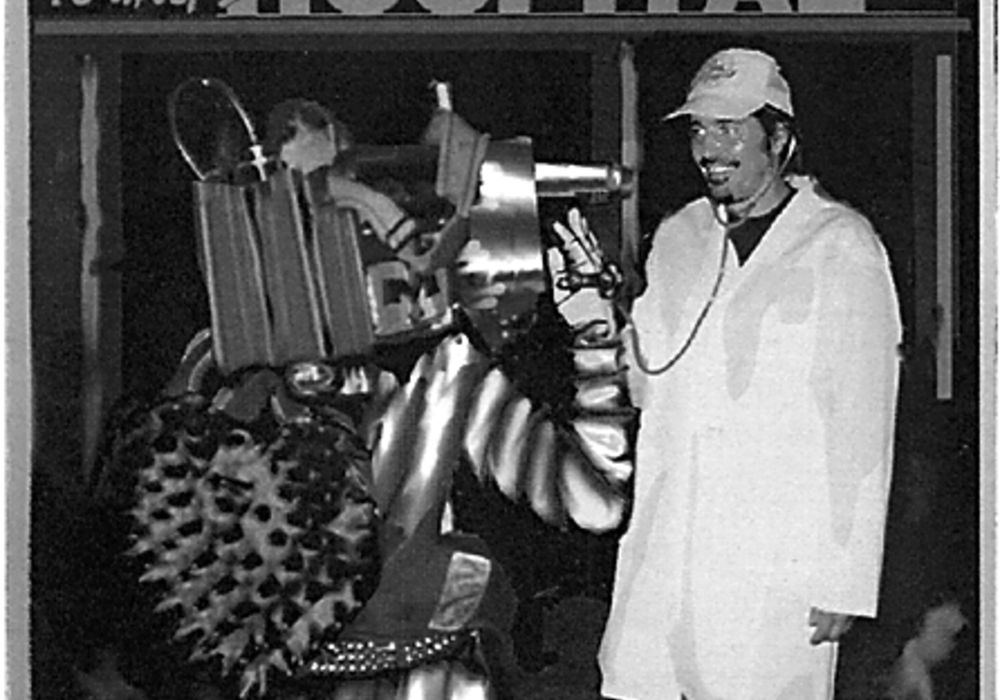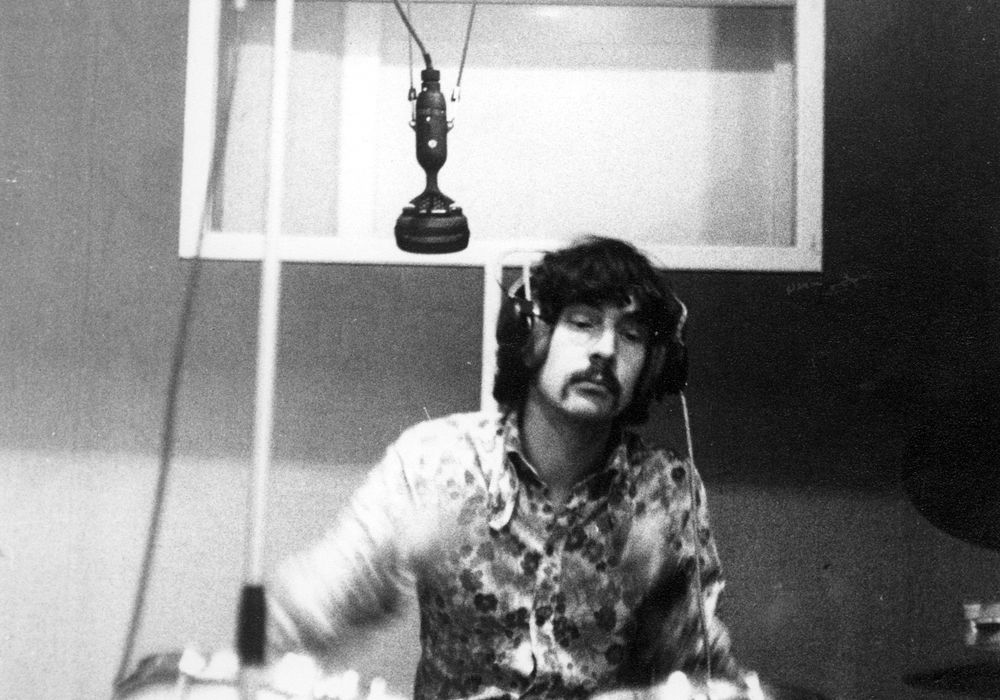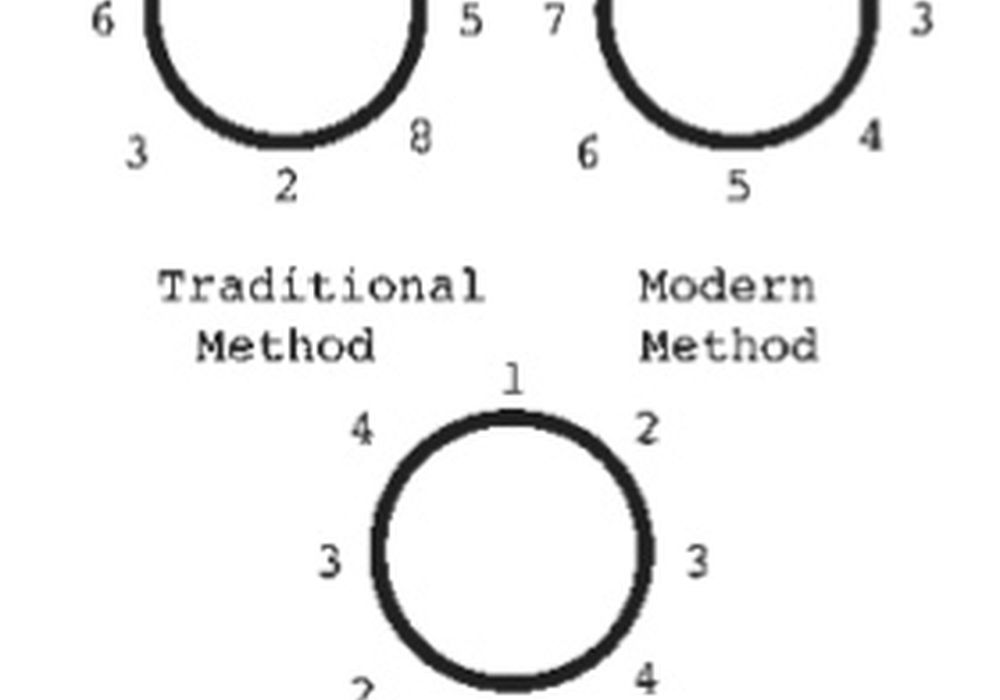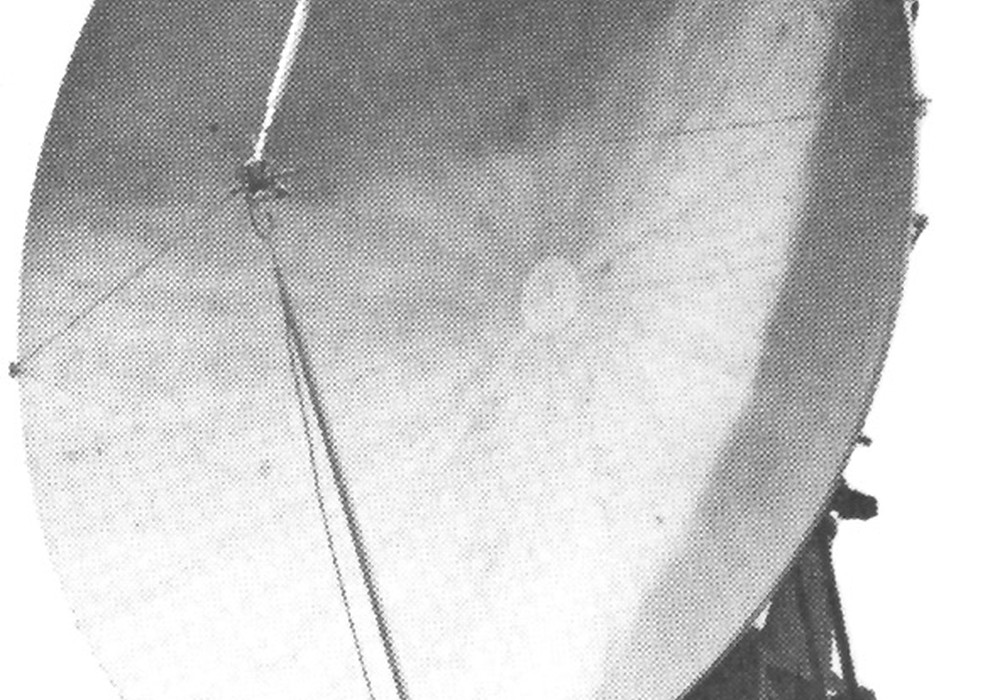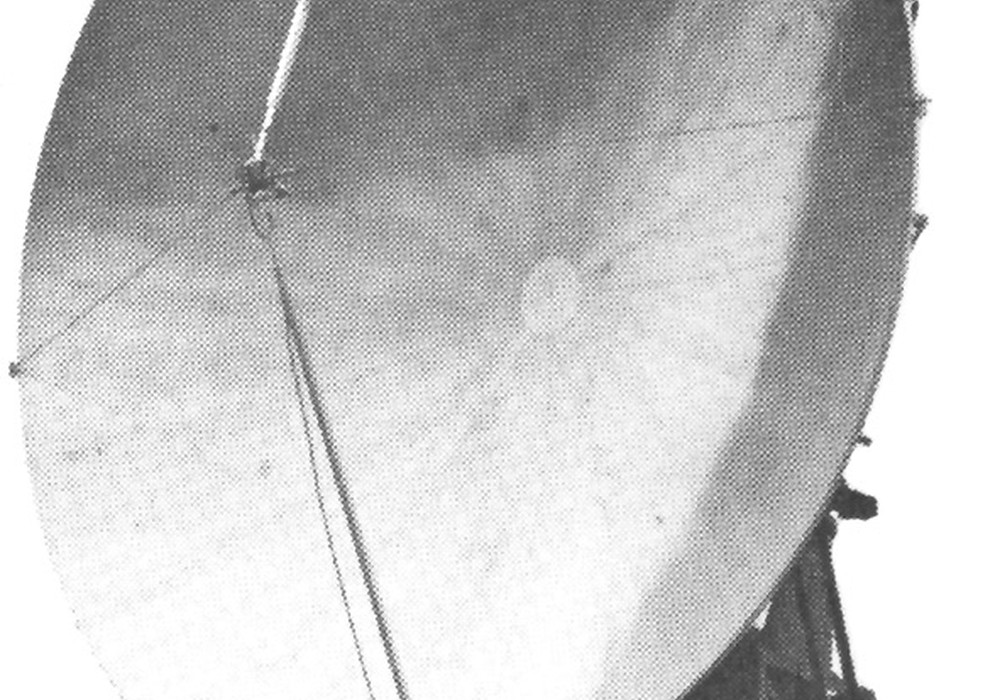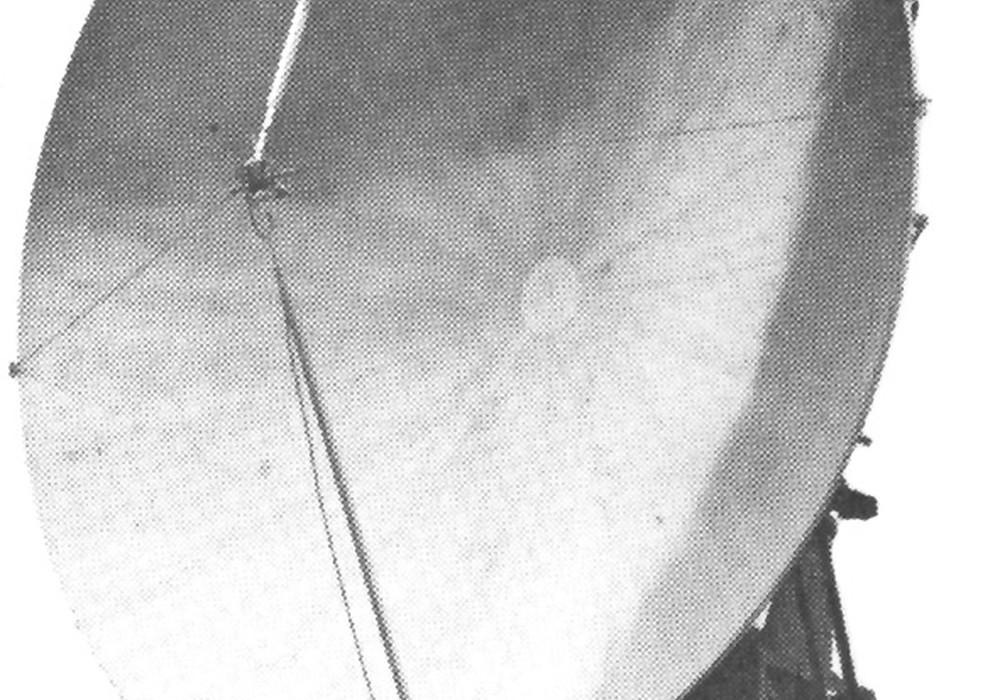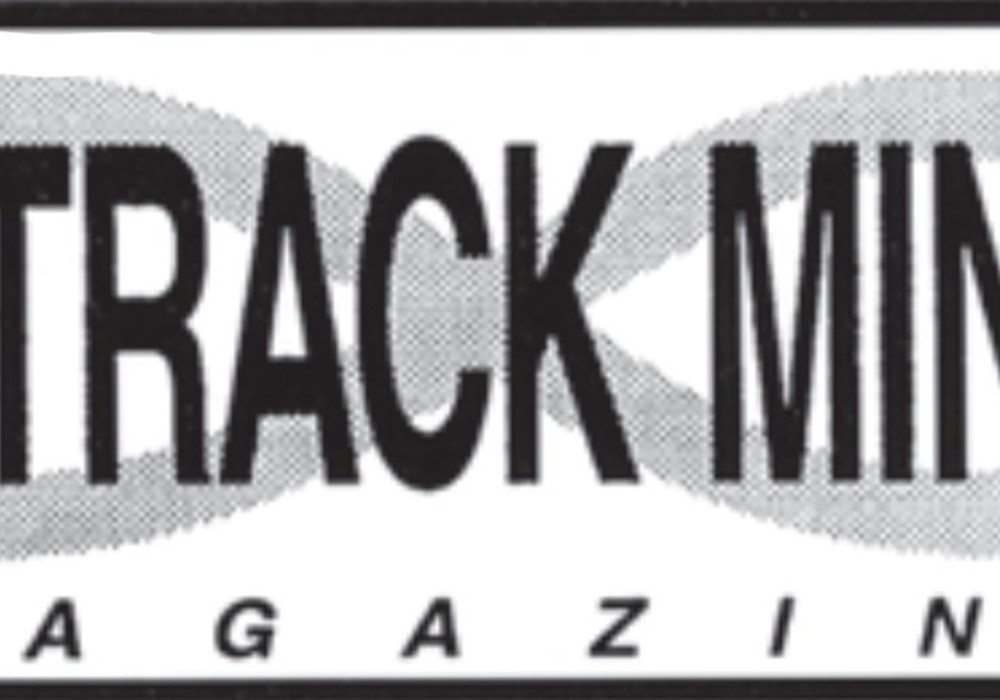Dave Mattacks is arguably one of the world's best drummers. His recording credits include: Joan Armatrading, Mary Chapin-Carpenter, Sandy Denny, Nick Drake, Brian Eno, George Harrison, Jethro Tull, Elton John, Paul McCartney, Jimmy Page, Fairport Convention, Paul Simon, Cat Stevens, Richard & Linda Thompson, The Chills and XTC, to name just a few. Dave was a member of Fairport Convention for many years and he has worked with legendary producers and engineers including Glyn Johns [Tape Op #109], Joe Boyd [#60], Geoff Emerick [#57], and John Wood. Dave and his wife now live in the US, where he continues to record and tour.
Could you explain what "seating" a drum head is?
There's a lot of things that are in play when you put a drum head on a drum. The shell moves very slightly, the head of the drum finds its natural place inside the counter hoop. Especially with vintage drums, maybe one of the lugs might be a little bit stiff, so there might be a bit of resistance. And the most important factor is that even with good quality drum heads, if it's a brand new head it moves, it stretches. So what I do is I get the head on the drum and get it to a certain tension, and then I press it in the middle quite hard. And that gives you several things — it actually seats the head into the hoop on the drum, it stretches the plastic and then when you press in the middle of the drum and you feel around the circumference of the head with your fingers you can tell whether you've got the head on evenly or not. In other words, you may press the head in the middle and it may feel even three-quarters of the way 'round and at a certain point you may feel wrinkles. And that means that at that point the head is under tension. And I'll probably do that three, four, five times. And every time I do it I check to make sure that the head is on evenly, check that it's seated, check for wrinkles that you can feel with your fingers. And then I slacken the head off and do it again.
Just to stretch it out?
Just to stretch it out. But also what happens is that even with a perfectly even, very straight, very level drum shell, when you press the head in the middle of the drum, you may find, for example, the wrinkles appear — the drum head isn't on evenly. You might find the wrinkles are at the 12 o'clock position. And then you maybe use the drum key at that 12 o'clock position to take the wrinkles out. And then I slacken off all the tension rods by an equal amount, just say 45 degrees on each turn on every rod, press it again in the middle, and sometimes you'll find that — because the head's still moving and stretching — the wrinkles are now at the 6 o'clock position. So I do that — tighten, stretch, loosen — about four or five times to make sure that the head is seated onto that drum. And also, most importantly, that it's stopped stretching. Because the two really crucial things are that, A: The shell is in round, that it's perfectly round, and that's something that is pretty much guaranteed with contemporary drums, because they're so well made, but also, B: That the head is stretched.
So to clarify the two crucial things are that the head must be stretched and the shell must be in round?
That the shell is in round, yeah. What that means is that the shell is perfectly round. Some of the older drums, if they weren't made properly, or maybe if they were left out in damp weather, they get very slightly elliptical. It's almost difficult to see with the naked eye. But one way to tell is you will put a drum head that is perfectly round on, and there'll be a little bit of play, and there'll be more play one way than there will the other, and that means the drum isn't in round. It's analogous to a neck not being completely straight on a guitar. It may look straight, but as you start to go up the neck the intonation gets weird. And it's the same thing with drum heads.
What about toms?
With toms, I'm always trying to make sure they sound like they're from the same family. I wouldn't, for example, have the small tom-tom tuned like a bebop jazz kit and the floor tom tuned like a rock kit. I'm trying to make sure that they have a similar tonality but the pitch is different. I might go for that bebop tuning, but I want them all to have that tuning. I'm trying to get a similar amount of sustain and tone from all the toms. But in terms of the heads being on the drum evenly and stretching the heads and making sure that they're in tune with themselves, yes, those rules apply.
With kick drums, you mention a pillow you use. Is that something you always use?
Some of the time. I let the music decide whether I want a dead sound, a very live sound, a double-headed sound, a double-headed dead sound, a single-headed drum with a blanket tuned high versus a single-headed drum with a blanket tuned low. And that's before you even get into different types of bass drum beaters. It's like anything else, when you really get into this and you find out the possibilities, it continues to amaze me that nobody thinks twice about the guitarist trying a different amp or trying different tones. But the drummer's like, "Yeah, well, I'll try a couple of snare drums." And that's it. But there's this world of possibilities, and I try to enhance the song.
Can you explain your favorite snare sounds and how you get them? Do you use different mics?
Not different mics. I normally leave that to the engineer. But you can change the sound of the snare considerably just by mic placement, so that's one thing. I have some favorite snare drums — I've got quite a silly collection. I've got over a hundred! I'll nearly always take three or four to any recording session, and if I'm going to be doing an album I'll probably take ten or upwards. And some of them cross over, but like guitars, some drums sound good with a certain head combination, and a certain tension or a certain tuning. And if you take them out of that tension or that tuning they don't speak as well. So I have them set up for their optimum performance. So that if I've got a particularly sensitive drum that sets up with a big, fat sound and somebody wants something with a higher pitch, with more crack to it, rather than tuning that drum up I'll go to another drum that's already set up like that.
You mentioned that sometimes you use Moon Gel or masking tape to change the snare sound. Could you explain how that works?
Masking tape is pretty self-explanatory. Moon Gel is a little device that you buy in drum stores, and it's small pieces of plastic, gel-like substance about 3/4" square, and you put them on the surface of the drum. Depending on where you put them on the drum, they dampen the drum very slightly. But the other thing they do is change the timbre very slightly. As well as taking some of the ring, they also increase the low end and they remove some of the high frequencies. And depending on the sound you're after, I sometimes cut those pieces in two and use just one little piece right out by the edge of the drum. As you bring that Moon Gel in towards the middle of the drum it dampens more. So if you put it right up on the edge it's a little bit, but if you put it right in the center of the drum it's a lot deader.
You mention that you don't like to use Zero-Rings usually. Why is that? Do you ever use them?
Yeah, once in a while. It's basically too much. If I'm going for kind of an Al Jackson, Jr., Al Green kind of big sound on the snare drum I might use an Zero- Ring, a thin one. But generally they're too much for me — sometimes they can be too dead. My whole thinking with tuning is to start with as much life and resonance as possible and back off as I need it in small increments. Whereas if you put an Zero-Ring on a snare drum it's too much, it's a big change. I can probably get a very similar effect with two pieces of Moon Gel if I want the drum that dead.
Do you prefer new heads, worn heads or slightly broken in heads?
I always prefer a head when it's broken in a little bit. For example, the kit I use with Mary Chapin-Carpenter, I've had the heads on that kit for about three years now. Most of my studio kits the heads stay on for at least a year. I normally do things to brand new heads to break them in, usually a little bit of masking tape to take the newness out of the sound. And if you were trying to do a kind of '40s, '50s blues type record you might want to go with calf heads to get that wooly sound from that era, that authentic sound. There are some plastic heads on the market now that get very close to that kind of sound without having to resort to calf heads.
Do you prefer front kick heads with a hole or not, and when do you use different ones?
I don't have a preference. It totally depends on the musical situation. Most of the time I'm going to use a kick drum with a hole in the head. And when I'm playing out in a club I'll use a kick with no hole in the head. But again that's only a basic rule. There might be situations in a club where I have to play very quiet, maybe somebody with an acoustic guitar and a double bass, and you want to keep the volume really low. I could use a double-headed kick in that situation, but that ring might be too much so I might use a single-headed kick. And I'll certainly use a double-headed kick in the studio if I think the application is right, if the music suits it.
Like what kind of music suits it?
Well, I used a double-headed kick on the Run Devil Run Paul McCartney record because we were going for a rock 'n' roll, kind of ambient thing. But I also used it on the last Steeleye Span record I did, which was a so- called folk album, but it was pretty heavy. I've also done some blues oriented tracks where we wanted that double-headed kick sound. I don't think there are any rules. There aren't for me. Some guys are very dogmatic, you know, "I have to use my double-headed kick." Or the engineer might be very dogmatic the other way and say, "You can't use a double-headed kick in my recording studio. It has to have a hole in the front." And I always try to let the music dictate what I'm going to play and what I'm going to use.
How does the Evans kick pillow you use affect the sound of the kick drum? Does it deaden it?
Yeah, it kind of deadens it, but it's a neat little device. Basically it's a little dampening device but it's got a little hinge in it. And as you strike the head part of the damping, part of the pillow thing actually moves away very slightly. So it's not like a thing that's permanently fixed pressing against the head. As you strike the head it's bending up like this. As you strike the head it's moving away. Sometimes I'll use just a piece of bubble wrap inside the drum. A 14" square of bubble wrap. Sometimes that's just enough to take some of the frequencies out and it'll give you that single-headed kick sound. But it might be just slightly live-er because there's virtually nothing pressing up against the head. I've done some things where we've used the bass drum with a hole in it and there's been absolutely nothing inside the shell. And you listen to the bass drum in isolation and it sounds weird, but if you listen to it in context with the other tracks, it sounds really good. And it's a different sound than if you had a pillow in there. So I'm always up for, Let's see, how about if we try this, or a different beater . . .
Could you talk a little about the different sounds you get out of different bass drum beaters?
Yeah. I normally carry about five or six. Most people know about the hard plastic and the felt, but there are some nice variations. Wood is one that most people know about. But rubber is a good source. Yamaha does a really good rubber one. And one of my favorites, because it seems to sit in the middle of the two extremes, is cork. But they're hard to find. I've got a couple of them and that's a really good sound. It's not too clicky and not too soft felt. And then I've got some basically variations on that, and that can really change. The crucial thing with bass drums and the amount of click you have is always to listen in context. If you just listen to a bass drum in isolation you may think, 'Oh, this has too much click,' or conversely you might think, 'Oh, this is absolutely ideal.' And then again, when you hear it in context with all the other instruments it could be ideal or it could be terrible. Context is everything.
Can you talk about head tension on the different drums and how it affects the sound of the drums? Generally you keep the bottom heads tighter. Why is that?
It just depends on the context. It's considered a pretty standard combination these days to have the bottom head of the toms slightly tighter. I just like the way it sounds. The basic rule of thumb is that the bottom head of the tom gives you the pitch and the top head gives you the amount of resonance. So if you want more ring you'll tighten the top head and if you want a lower pitch you'll lower the bottom head. Though there are exceptions to that rule — shell construction, acoustics of the room, etc.
Do you tune your drums to certain pitches?
No. My rule about that is if you tune your drums to a perfect triad, say a C triad, then someone will say, "Right. We're going to do this tune in E flat." I try to get just a fraction of pitch bend in each tom, so that when you hit it you don't get just a single pitch. I don't like that. Even when I tune high, when I'm trying to get a so-called kind of typical bebop jazz tuning. There's a common trick of tuning the snare drum to the key of the song and sometimes that works. But depending on what the song's doing, that can make it disappear, or you might want it to disappear.
When you're tuning how do you ensure that the different drums mesh together nicely but have disparate voices? Are there certain intervals between the drums you like to use?
Yeah. Specifically with the toms and also to some extent with the snare drum and the bass drum, I'm basically looking to almost exaggerate the differences in the pitches. Because what I've found over the years is that when the pitches of the drums are too close together — and by that I mean like a second or a minor third — when you play fills, they disappear and they blend into one. So I'm always trying to get a reasonable amount of separation between the drums. That's not to say that the snare drum has to be high and the bass drum has to be low. And it's the same thing with cymbals. You know, I don't want to use a whole bunch of 18" crashes so that when you hit three cymbals they almost blend into one. I've also found that when you exaggerate the differences pitch-wise the voices speak more clearly. As I'm getting older I getting more interested in how to get the sound out of the drum by how I play it, where I strike it, how I hit it, the variations of sticks and beaters that are available. That's the kind of thing that I'm pursuing more actively.
How do you get good cymbal and high- hat sounds?
Experience. I think there's a tendency with inexperienced players to hit too hard and use too heavy a cymbal, whether it's the high hats or the ride or the crashes. They may sound good when you're blazing away on a big stage surrounded by Marshall stacks, but when you get them in a studio they basically take over the world. My rule of thumb — and it's a rule I break as often as I apply it — is to use much thinner cymbals in the studio than I do live. The basic thinking behind that is to achieve some kind of balance. Basically heavier cymbals mean more volume. And when you listen to a drum kit through an overhead microphone in a recording studio, when you use heavy cymbals, all that microphone tends to hear is the cymbals, it doesn't hear enough drums. If you use thinner cymbals, smaller cymbals, the cymbals won't wash out that microphone and the drums will be able to speak louder. Again these are kind of guidelines. There are situations where you can break that rule. Sometimes you might want that sound. If the cymbals are taking over, the engineer might compress the drums so you get that kind of "Tomorrow Never Knows" compressed drum sound, which helps to prevent the cymbals [from] taking over the world. You can hear a little bit of compression on "Peter Pumpkinhead" on the XTC album, Nonsuch, that I did. The opening track — there's a little compression on those drums — that's an interesting sound.
So there's a little compression on the drums on that song?
On the overheads, yeah. When they mixed it. It went down flat, but when they mixed it they put a little compression. It's a cool effect. It makes the drums a little bit more punchy. But again, if you do it to a kit, if you compress that to a kit where the cymbals are too loud, it doesn't affect the drums that much, it just stops the cymbals from kind of washing out.
If you compress the kit? The close mics?
No, the overheads. If you compress the close mics that's another effect entirely.
So you compress the overheads to compensate for the cymbals washing everything out?
Yeah, to try and make the drums come through more. It's sometimes used if the drummer hasn't got it together. But it can be a cool effect on the drums when you do it to a reasonably well-balanced kit.
Could you talk a bit about some of your favorite studios and drum or live rooms, and what you liked about them?
I did so many records at a place called Chipping Norton. I did the XTC record there. It's a studio in Oxfordshire that doesn't exist anymore. It's a shame. That was a great studio. And then the obvious ones, like the old Air Studios in the middle of London, before they moved, George Martin's place. They used to be in Oxford Circus, then they moved to Hampstead. I did a lot of recording at the old studio in Oxford Circus. I did the new Mary Chapin-Carpenter record in the new studio in Hampstead. Those are great rooms. But I'd have to say all the studios at Abbey Road — I've worked in all of them — are all great rooms. And I think one of my favorites was Olympic, where I worked with Joan Armatrading, Andy Fairweather- Low, Georgie Fame, people like that. Island Studios in Basing Street was a great room. I did a lot of stuff there. I did some live stuff there with Sandy Denny, with an orchestra. We cut stuff live with a rhythm section and a thirty-piece orchestra. And the one where I kind of got my start was a studio that doesn't exist anymore, where I did the Nick Drake stuff, all the Fairport stuff, the Incredible String Band, loads of stuff. That was called Sound Techniques, in Chelsea, and that's long gone. That was a small room but it was a great sounding room. All the Richard and Linda Thompson stuff that I did was done there. That's the room where I kind of learned my basics. I had a great teacher. Did I tell you that story, about my first recording session for Liege and Lief? The engineer was John Wood, who engineered all the Nick Drake and Sandy Denny stuff. And my hero was a big band session drummer by the name of Kenny Clare. He was my idol at the time. I went in there to record for the first time with Fairport and I talked to John Wood, the engineer, who had previously been at Abbey Road. He came from doing classical sessions at Abbey Road, he cut his teeth there. And I said to John, "Can you make me sound like Kenny Clare?" And John goes, "You fucking play like him and you'll sound like him." And that was my first lesson about tuning drums; that it's not to do with the engineer making you sound like somebody, it's you doing something, it's what you do. And Glyn Johns was a not dissimilar disposition — not unfriendly, very friendly — just didn't have any time for bullshit. And those two guys, George Martin and Geoff Emerick, who did all the McCartney albums that I did, when you're around people like that you kind of just shut your mouth and soak it all in. But I continue to be knocked out, and I always learn something, from every session I do.
You mentioned a few people so far, but could you list some of your favorite producers and engineers you've worked with, and talk about how they recorded drums? Like when you worked at Abbey Road in the '70s were you using reel-to-reel four tracks, or...?
When I started it was eight. I think it was eight. It might have been sixteen. By the middle of the '70s everything was twenty-four tracks.
Do you remember how those guys got drum sounds?
I do remember.
Was it like the old three-mic kind of thing? Tracking everything live?
Everybody was multi-mic'ing by the time I started with Fairport. I remember mics on the toms and the bass drum, but the drums were probably going down to two tracks, or four tracks. The guy I remember being very fastidious, probably more than anybody else, turned out to be one of my best friends, Gus Dudgeon, who produced all of Elton (John)'s stuff. I probably did about fifty records with Gus, including some stuff with Elton. Geoff Emerick would multi-mic but the bulk of the sound would come from the overheads, and he would use Coles. But the real exception was Glyn. He would basically only ever use three mics. All the stuff I did with him-Joan Armatrading, Andy Fairweather-Low, Georgie Fame- it was all three mics. And he used that same combination on Charlie Watts, Keith Moon, Don Henley. He produced and engineered some of the early Beatles stuff, he produced and engineered a lot of the Who stuff, and on everybody, no matter the size of the drum kit, he used three mics.
Do you remember what those mics were?
Yeah. Glyn would use two (Neumann) U-87s and a (AKG) D-30 on the bass drum. It was basically the predecessor to the D-12. And he'd use that on everybody.
And where did he put them?
He put one 87 above the snare drum, between the snare and the rack tom, about head high. So if I'm sitting down it's probably about five or six feet above the ground. And then he'd put the other one by the floor tom, but back slightly, very slightly behind and to the right of the drummer, about shoulder height, and pointing down. And the idea is that this one picks up the floor and the cymbals this side, and you pan that slightly to the right. You pan this one slightly to the left, and it picks up the snare, the rack and the toms on this side. But he used that combination on Keith Moon, with all those drums and cymbals. And then the D-12 always went outside the kick, whether it had a front head on or not. In fact, when I knew I would work for Glynn I would always have the front head on the bass drum, because he preferred bass drums with a double-headed kick. But he was one of those guys where I would say to him in the early days like, "Well, Glyn, the drums sound great, but, um, that cymbal's a bit loud." And he'd say, "Well, don't hit it so hard." And I'd say, "I'm not hearing enough of the rack tom," and he'd say "Well, then, hit it harder." So I learned that the balance came from me. The idea being that, if the microphones are taking a snapshot of the kit and there's something blurred, the camera's not wrong; it's because you've put it in the wrong place. The whole idea was that the sound and the balance came from the floor, not by the person doing the recording saying to the engineer, "You fix it, you make me sound good, you do this, you do that." I continued to try to learn to make it right on the floor. Because I used to see inexperienced people saying, "Well I'm not hearing this, you do this." All the good engineers say, "If you get a good sound, all we have to do is push the fader up. We don't need to use loads of EQ or compression or tricks." If the sound is good to start with it's only going to get better. And Geoff Emerick was one of the first guys who I saw move mics around, and I started to learn about proximity, about what happens when you do move mics and you put them in different positions.
Could you talk about mic placement?
Yeah, it's just learning a variation on the proximity effect. The proximity effect's basic rule of thumb is more low end when you move the mic closer. But that rule only partly applies on different drums. It doesn't work on the bass drum. I think there are some other things going on with the bass drum. If you stick a mic like that [pointing] on a bass drum, you're not going to get more low end. But again, depending on room and acoustics, that changes as well. In other words, if you get a kit, a set of drums that's tuned very live, a la the John Bonham sound, in a live acoustic room, if you just put close mics on, it's not going to sound good. You're going to get too many overtones, it's going to sound weird. But you back those mics off about six feet and that's where the size comes in. So distance can equal size. But it's depending on acoustics and tuning as well. In other words, if you take a set of drums with thick heads, no bottom heads, drums very damped, and you move the mics away from them, it's going to sound like shit-it's going to sound like a bunch of cardboard boxes. Whereas if you put close mics on that kit you're going to get a pretty good sound. It might be a bit tubby and a bit dead, but if you close mic a kit like that, with damping on the heads and maybe no heads on the bottom, you're going to get a very up-front, in your face sound. But if you back the mics off, it's going to sound shitty. Conversely, if you've got a kit that's tuned up and tuned high a la big band, a la John Bonham, and you put close mics on them it's going to sound a bit weird, but if you back those mics off you get a sense of space and of size. Then you've got like a hundred variations between those two types of tuning. Also the acoustics of the room are going to affect those drums and how they sound.
When you're working in a studio and close mic'ing drums, can you make a list of your favorite mics?
No, it doesn't really matter. I know when it doesn't sound right, and I can probably do things to help, maybe a combination of mic placement and me changing the tuning. I used to have favorite mics and I don't anymore 'cause I've been in so many situations where mics that you wouldn't think are suitable for one application or another are used on the drums and it sounds great. So invariably with a mic thing it's the engineer. I've got a bass drum mic that I carry with me.
What's that?
It's a Shure SM-91. And I carry that with me and I'll say to the engineer, "This might work for you inside the drum. If it doesn't it doesn't matter, leave it."
And do you usually combine that with outside mics?
Yes, nearly always.
Do you care what they are?
No. Although once in a while, in some rooms, just that 91 sounds fantastic. My friend Mason Daring, who does the music for the John Sayles' films, has got a studio here in Marblehead. When I go to Mason's studio we only ever use the 91 and it sounds great, you never need anything else. Other times I'll go in to other studios and the engineer might use only a quarter of it and three quarters of his mic outside the drum, or mix and match. There's no real rules. It depends on the engineer and what he wants to hear. Some of the stuff I did at Q Division recently, the engineer didn't like [the 91]. And I went in and heard the bass drum sound and it was fantastic.
I noticed that you brought a snare mic.
Yes, it's a cheap Sennheiser vocal mic, but I can't remember the model number. I use that on snare, over the top of the snare. And the reason I bought it was because George Massenberg used one on the snare drum and it's his favorite mic. And he said, "It's my secret weapon." I think it's Sennheiser's version of a 57, and they discontinued it within a year because nobody liked it. It's a little more transparent than a 57. They're really cheap; I got it for like $200.
Are there other mics that you bring to sessions?
No. I think the kind of mics I'd like to take to sessions are $10,000 mics, and I'm not that rich.
Could you talk a little about mic placement? In all of the sessions you've done over the years, were there any unusual, unconventional things people did for certain songs?
If you want to get a semi-kind of military sound out of the snare drum, you turn it upside down and play it really quietly and close mic that. And this is nothing new — if you get the right room and acoustics, if you put a 57 up high in the ceiling and compress the bijesus out of it you can get that kind of Phil Collins sound. Another trick that was used for awhile was on playback, sometimes they take the snare drum that you used on the song, and they take the track that just has the snare drum on it, so you've basically got an audio track with just snare drum. They feed that back into an Auratone, those tiny little cube shaped speakers — they were kind of the '70s and '80s versions of Yamaha NS-10s, they were the little studio monitors that everybody used — and they would feed the audio track with just the snare drum back into the Auratone, this little speaker, and suspend the Auratone over the snare drum and then re-mic it. So if you've got a snare drum going, "Cack! Chick. Ga-Cack! Chick." Put that sound, just the snare audio track, back into this little speaker, suspend the speaker over the snare drum, so the sound of the snare drum is re-triggering the snare drum, and you get this very strange, kind of broader than life snare drum sound. And apparently Stevie Wonder was one of the first guys who did that. And that got very popular for a while.
Anything else unusual in terms of panning or compression or anything?
I can't think of anything. There's one thing I can tell you. The Joan Armatrading track called "Love and Affection," which is one that I played on, there's a sound on the record, there's this cross stick, and it sounds like it's going after the beat, and Glyn was doing that manually. He had the echo on a pair of faders and as I was playing it he was riding the echo faders manually after each cross stick that I played.
Did people mic drums differently when you first started doing sessions?
There was a tendency, because of the style of how drums were sounding at the time — kind of dead sounding — to get the mics incredibly close to the drums. And one of the things I realized was that my drums, the way I tuned even back then, sounded a little better if they had a little bit of air. So they would have the snare mic... away from the head and I would always try, surreptitiously, in between takes, to lift it up and get the mic just a little bit away from the head. I even had a kit with single-headed tom toms in those days.
You've worked as an arranger and producer on several records. Could you talk about how you like to arrange and produce records?
Yeah, I haven't done that much, I've started to do that recently and I really enjoy it. And I think I enjoy it because I've been quietly witnessing that for so long, I've been lucky enough to work with so many really good people, so I've kind of watched it and observed it all. I think the key things are to try not to impose too much on the artist, just guide them. That's crucial. And attention to detail. I like things that you become more aware of the detail after the second or third listen. I think just trying to find a good vibe for the song and working with the artist.
How do you like to put drum sounds to tape — dry, or compressed or effected in some other way?
I think these days as near to flat as possible, and as near to no effects as possible. If it's a really rocking track and you want to hear some room to kind of vibe it up a bit I'll maybe monitor with the room mics up. But it just comes back to that rule: If you can make it sound really good doing as little as possible, it can only get better. Whereas if you have to do A, B, C, D or E to give you the impression that it's working well then you're probably on a highway to nothing. It depends on the situation. If you're cutting some steaming rock track and it really sounds great with some compression on the drums, then I might monitor that way. But in the interests of getting a good mix you might say, "Let's compress afterwards." Although, again, because there's no shortage of tracks these days, you might say, "Okay, let's compress the overheads and put those compressed overheads on an additional two tracks, so that we've got the straight tracks and we've got the compressed tracks, so that we don't forget the settings, because it sounds so good."
What about double tracking?
I like to do that. Sometimes high hats are fun. Sometimes you might like to double track another kit, with a different tuning. I've done that once or twice. That's a fun thing, but you have to be very careful with that. And sometimes you can do the same thing, but in the interests of keeping it clean you might reproduce the drum part and not play the bass drum. So that if there's any flamming it's flamming with snares and toms and the occasional cymbal. Sometimes if you get things that flam on a low frequency that kind of loosens up the bottom end and you might not want to do that. Or sometimes if I'm going for an effect there might be a certain part I play on a snare drum and I might do two tracks of duplicating it but at a higher pitch, just little things like that. It just depends on the song.
What about mixing? What do you like to do with compression and reverb?
It depends on the music, but I don't have any rules. If something's going to rock out I do like to hear some room. I think it can be a bit overdone, if the room's a bit too high in the mix, if you hear too much room sound. But it can be a cool effect. I remember this AC/DC record that came out years ago, right in the midst of that huge, kind of Bonham drum sound, and the drums were so dry, and they were so in your face and they were so rocking. And I think that turned people around and made everybody realize that you didn't have to sound like you were in the middle of some huge bathroom to sound rocking-they could be rocking and be really dry and in your face. It was just like the antithesis of the Phil Collins kind of Bonham sound. I think the bottom line is there are no rules, it just depends on what you're after and what sounds good. The thing that I have really realized is that so many of these things are fashion. And when you and I were talking about the Nick Drake record, one of the reasons that doesn't sound dated is because there aren't really any fashionable sounds on it.
It's timeless.
There's no huge drum sound, there's no kind of flanged guitars, there's no gated reverbs. It's basically somebody singing a song accompanied by a band. And the more I listen to things like that I realize that's the way to go. I remember talking to John Wood about this a few years ago and he said, "You listen to records on the radio and it's almost like someone date stamped them. Oh, there's the chorus guitar, that means it must be 19-whatever." I think any future recording I do I'm going to try and stay away from things like that. Anything that date stamps a record, like loops. Five years from now everyone's going to be listening to records and going, "Oh, yeah, that's the early 2000s."
I have to say I'm guilty of that. We used a lot of loops on our recent record. But we'd use loops and live drum parts, or we'd use different kits and we might loop something on one kit and have a totally different kind of kit come in over top of it on the choruses or something. Not that we achieved it, but we were going for a kind of Jon Brion thing.
Yeah, that's a classic case of using all the technology that's available to you and hopefully not date stamping. I mean, it's date stamped in that he's a contemporary record producer, but it all sounds good. It's musical and it all sounds good. That's a classic case of him proving the exception to what I've just said about not date stamping records. But you listen to his records and they're great records.
Yeah. Have you heard those Aimee Mann records he's done?
Yeah, those are fantastic. I love those records.
What was it like working with Nick Drake?
It was really enjoyable. The thing about Nick was he was incredibly talented and incredibly shy. He really had something special but he was just painfully shy. I thought it was good at the time. I remember thinking, "Yeah, this is good." And you listen back to it now and it is great stuff — the tunings, the guitar playing, the singing, the songs more than anything else. It's all about the songs.
What about Burt Jansch?
I worked on one or two of his records. Burt influenced a lot of people, he was a real kind of icon. I'll be honest with you. At the time I remember thinking, "Yeah, this guy's good. Yeah, he can play the guitar." And then you look back and you realize it was really great.
What about all the work you've done with Fairport? Does anything stick out about working with Richard and Linda Thompson?
If anything with the Fairports and Richard, that truly was nearly always the mindset — that you don't date stamp stuff. We shied away from trendy stuff almost religiously. The Mock Tudor record is like that. Richard's idea is to record a performance. He said, "If I tried to make a 'produced' record it wouldn't be me, it wouldn't sound right." He wants to capture a performance, almost like a jazz record.
